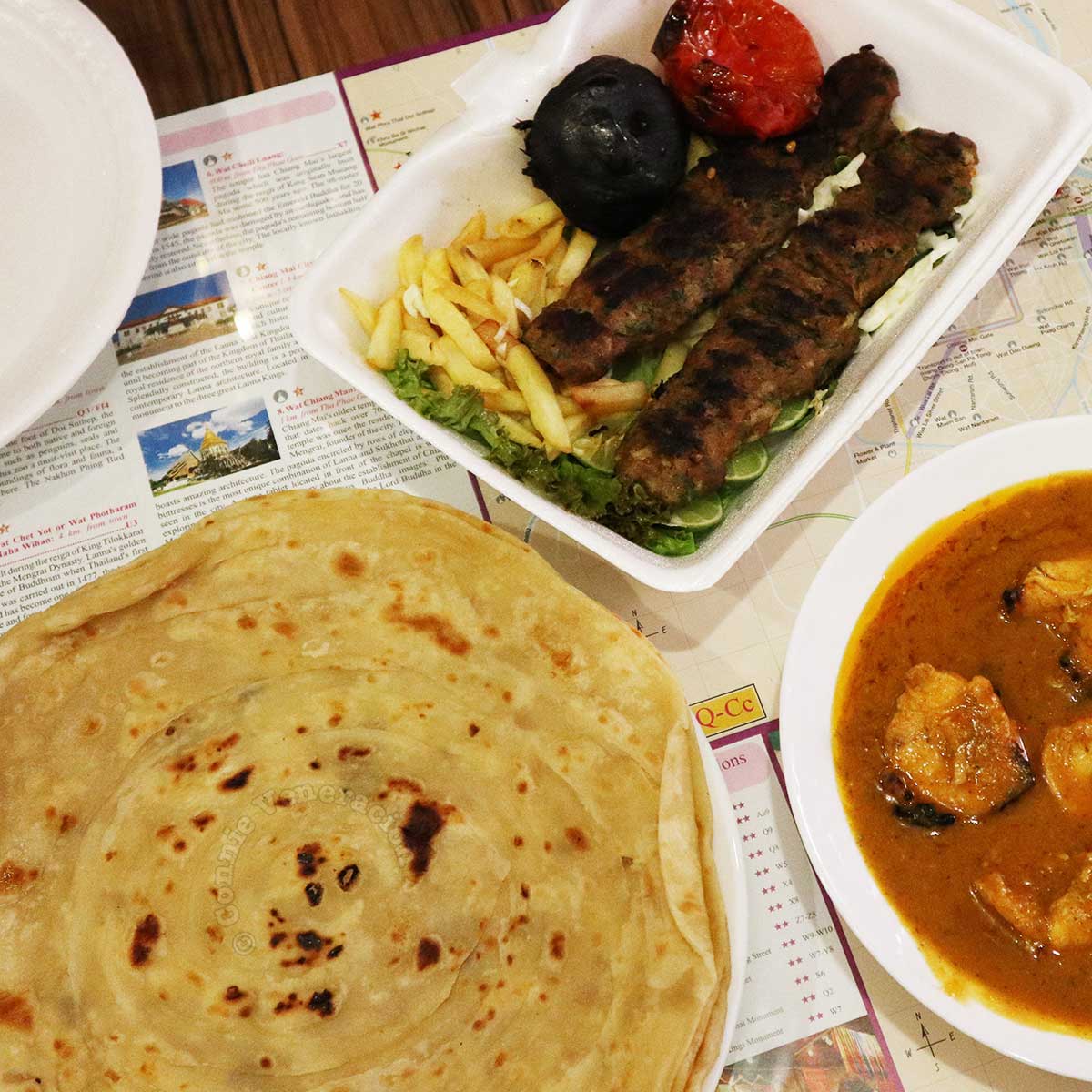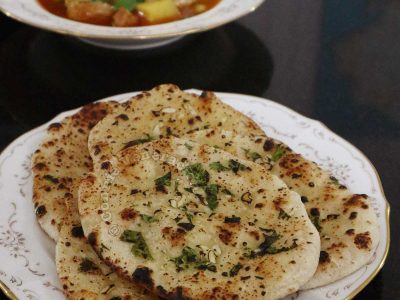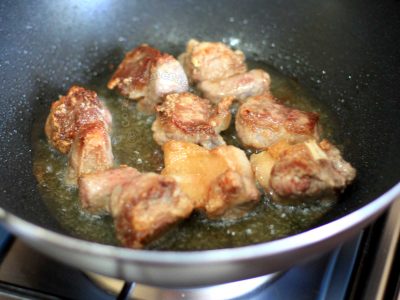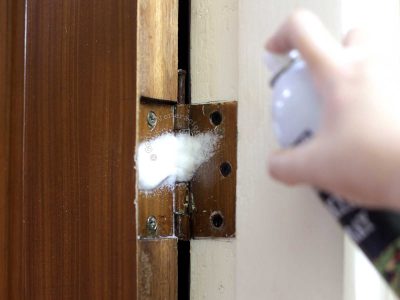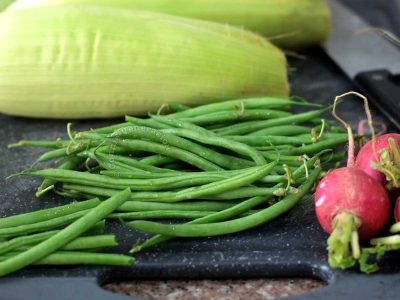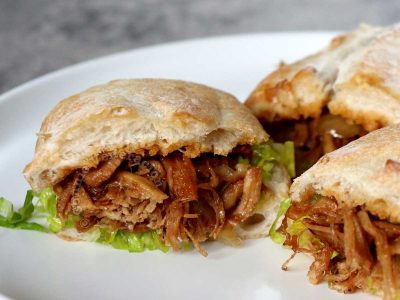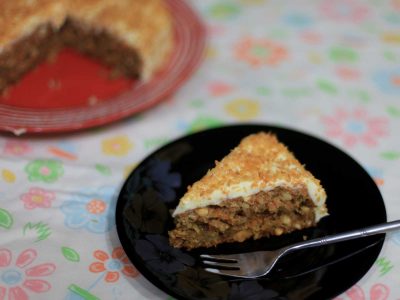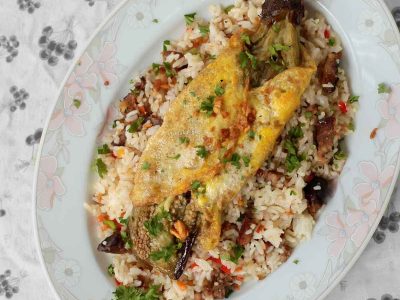The first time we had paratha was during a New Year’s Eve family dinner in 2010 at a restaurant overlooking the city lights. Wedges of paratha were served with chickpea soup and we loved it so much that when we spotted frozen paratha in the grocery, it bacame a semi-regular item in our shopping list.
Fast forward to February 2020 in Chiang Mai. We ordered dinner at Al Reem and, instead of rice, we opted for paratha. Never in our wildest dreams did we imagine that paratha could be so large. One piece per person was more than enough to go with all the meat.
What is paratha?
Paratha is an unleavened flatbread that is associated with India although it did not exist in the region prior to the arrival of the Mughals. The name of the bread is derived from “purt” + “ata” which means layers of cooked flour. Paratha is crisp and flaky outside but soft inside so that you can pull it apart into pieces without crumbling.
How does paratha acquire that texture? Think laminated bread with its layers of butter between sheets of dough that are rolled thin before shaping. Paratha also consists of layers of dough, without yeast or other leaving agent, and the fat between the dough is ghee (clarified butter).
What flour is best for making paratha?
This is where we come to the difference between paratha and parotta. While paratha is Northern Indian, parotta is Southern Indian. The difference? The flour used for making the flatbread.
Parotta is made with maida flour which is also a wheat flour but bleached, and milled more finely without the bran. I read that it is closer to cake flour than all-purpose flour.
How my daughter, Alex, makes paratha
To make the dough, two cups of flour are mixed with a cup of water, salt and a little oil. The dough is kneaded until smooth, covered and rested for half an hour, then cut into portions.
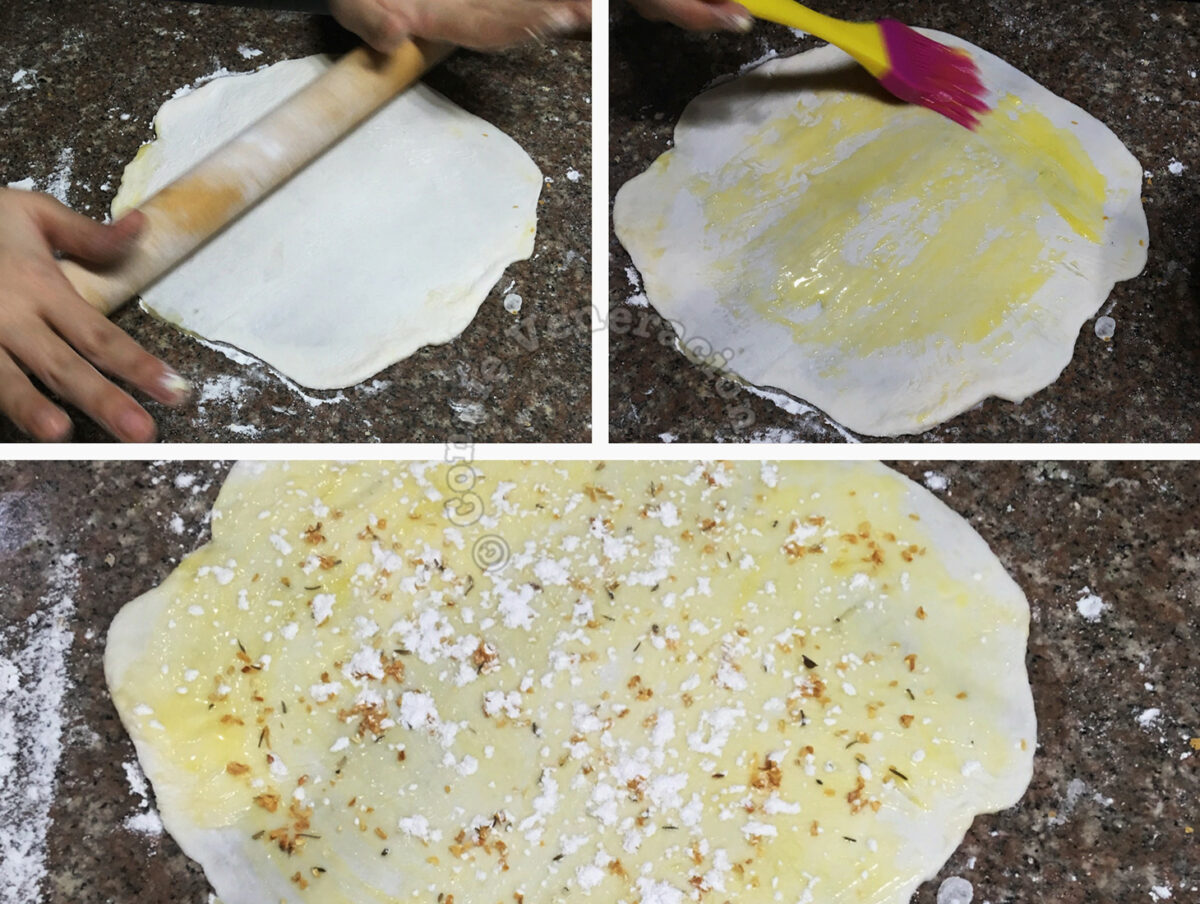
Each portion is rolled thinly then brushed liberally with ghee (butter is a passable substitute). If making stuffed paratha, the stuffing is spread on the dough.
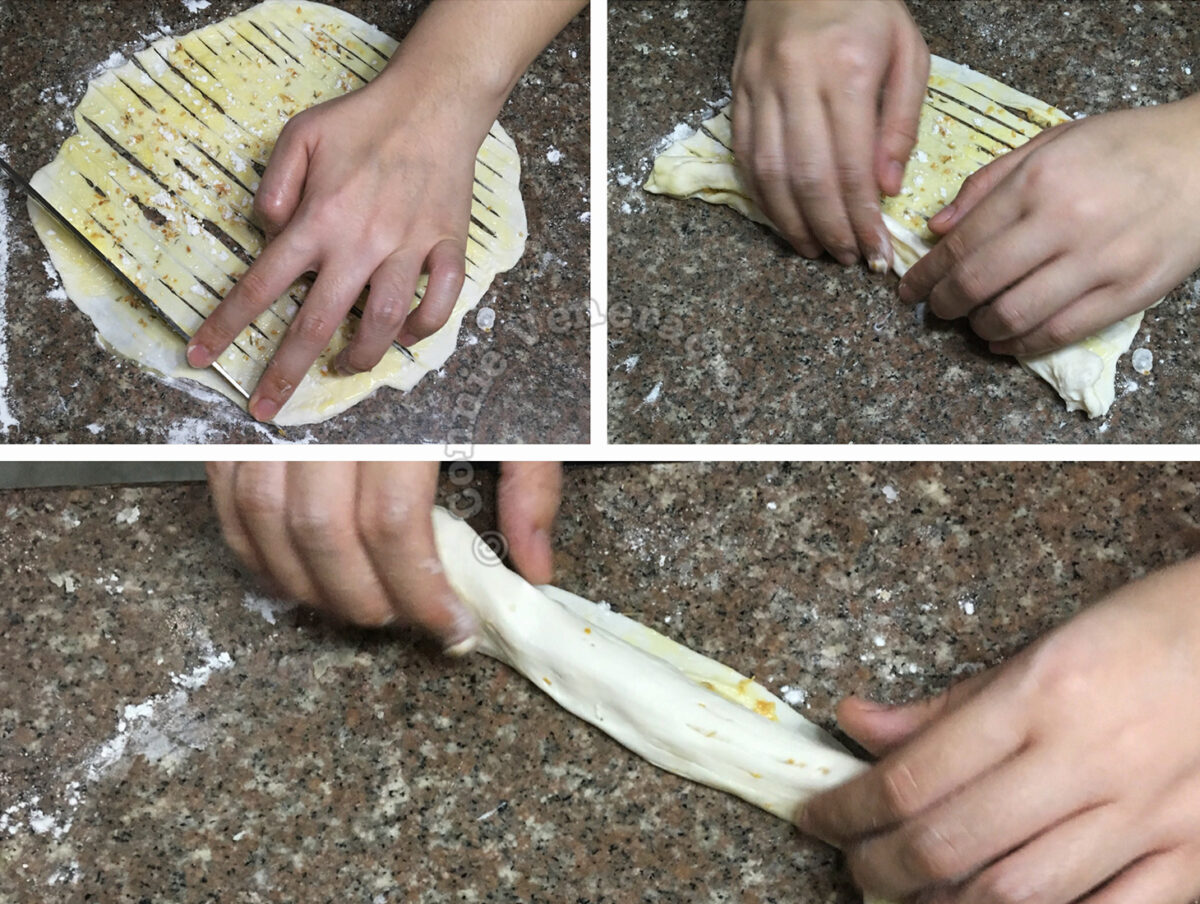
The dough is cut into strips (an alternative method is to fold it multiple times) to create the layers then the strips are gathered to form a log.
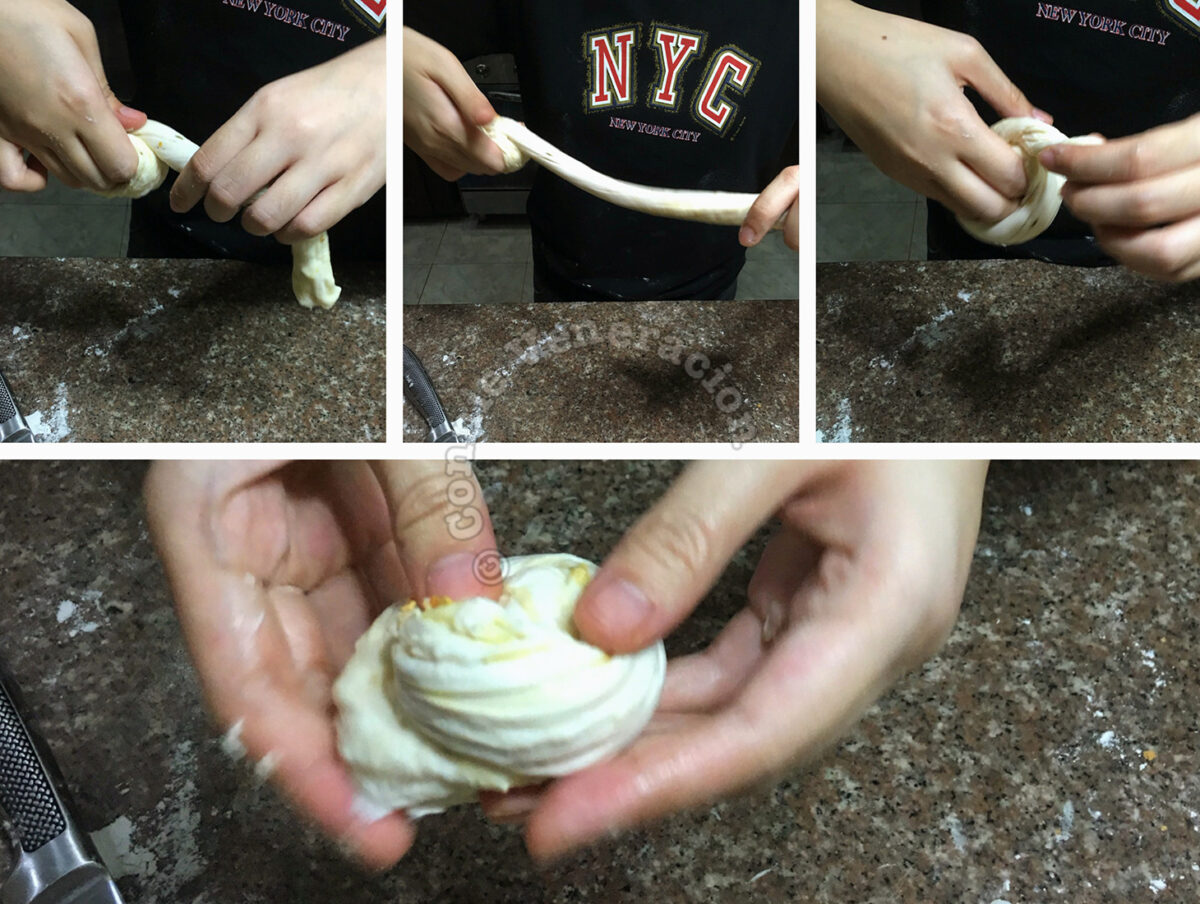
The log is lifted and pulled to stretch it into a longer log while, at the same time, the dough is gathered into a coil.
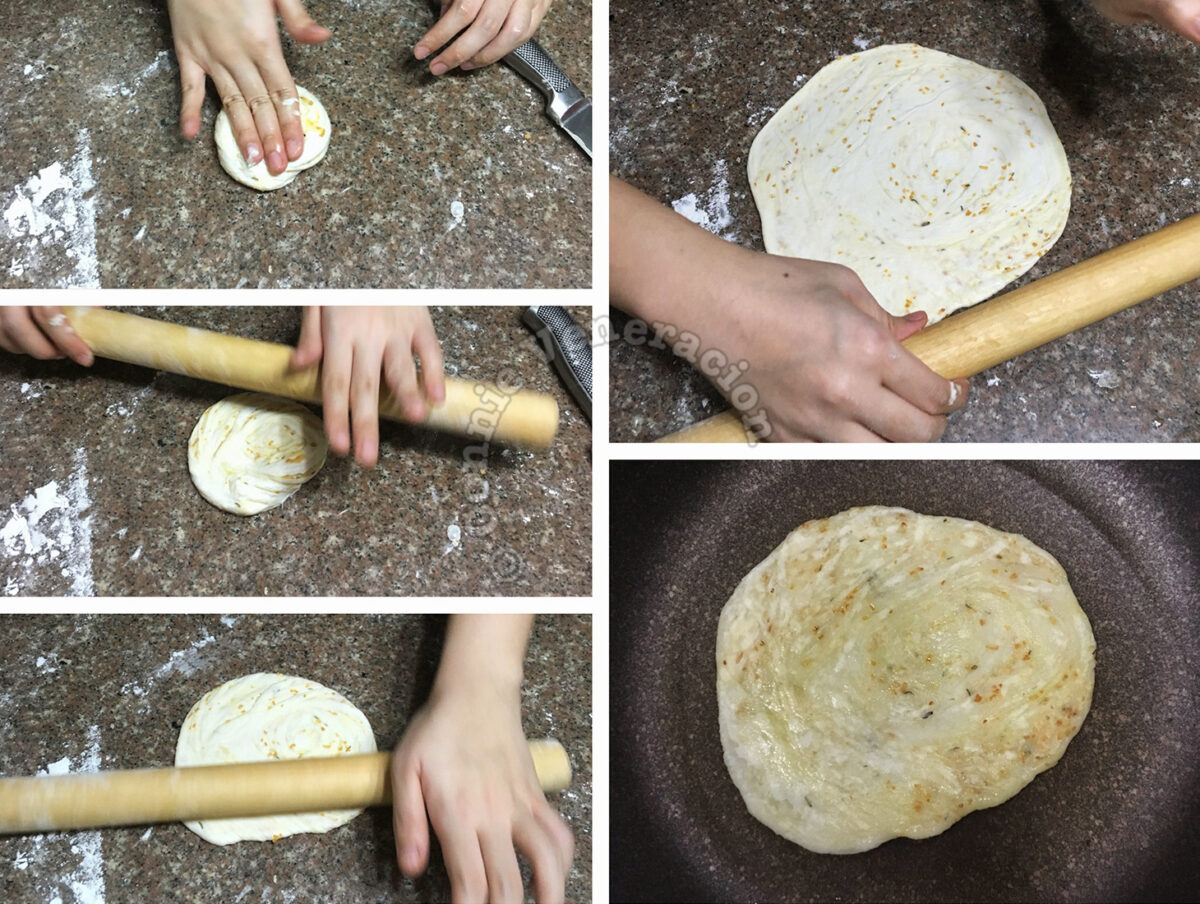
The pieces of coiled dough are rested before they are pressed down to flatten then rolled until until thin. Then, the dough goes on a hot griddle.
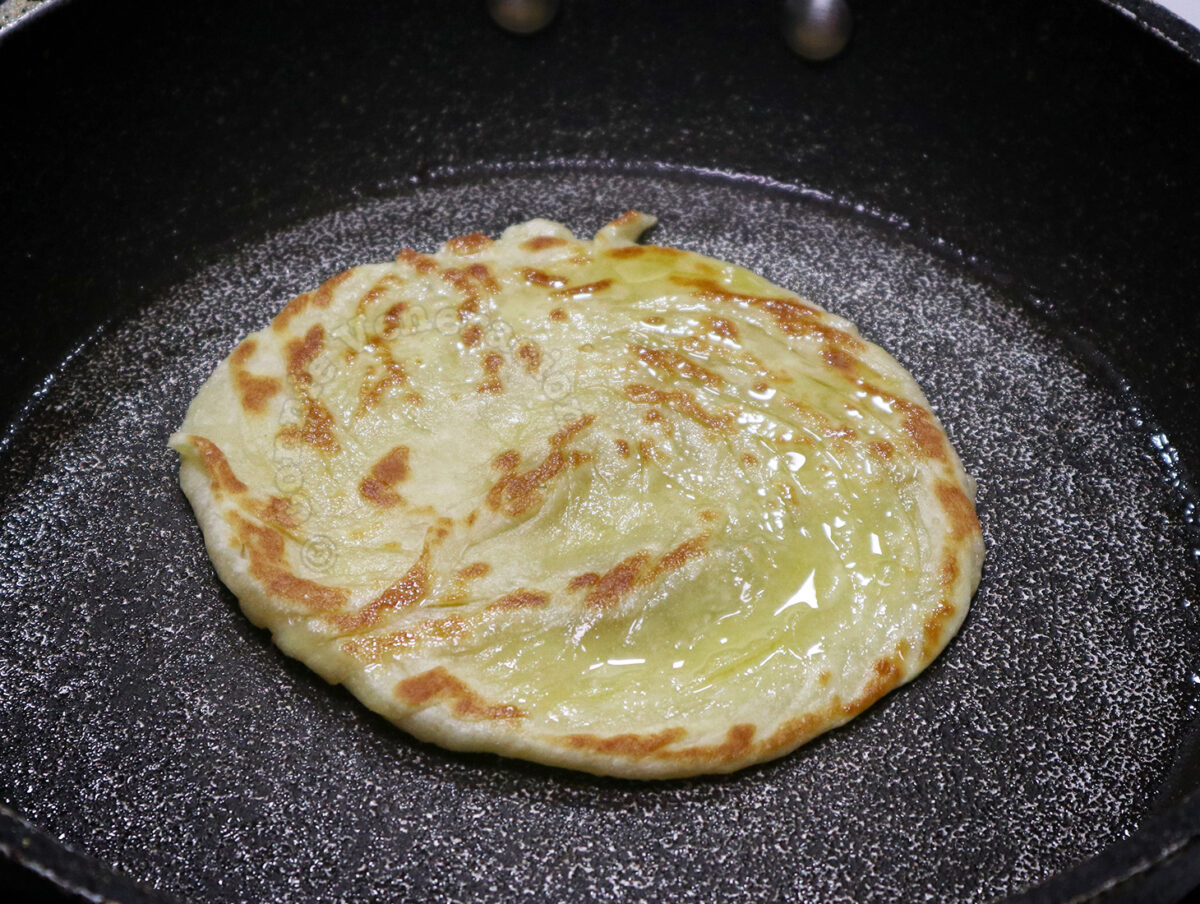
The dough is cooked on both sides until crisp and browned in spots.
How to store homecooked paratha
Because of the laborious process, it is ideal to make paratha in bulk and store them for future meals. They do freeze well because of all the ghee.
Cool your paratha to room temperature. Arrange them in a stack with non-stick paper between each flatbread. Wrap the stack in cling film and store in the freezer. They will stay good for a week or two.
For more flatbread, see the recipe for homecooked naan.
Homecooked naan
Naan is a flatbread cooked in a tandoor and eaten in parts of Asia, the Middle East and Caribbean. No tandoor? Make naan on the stovetop using a griddle and a kitchen torch.

